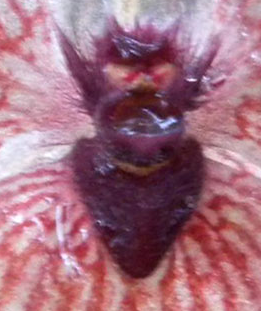 | According to cops it was a professional job and the thieves knew exactly what they were after. Bearing all the marks of an art gallery heist, this was the scene at Kew Gardens in 2014 where a rare African water lily was snatched. Its thought to have been sold to an unscrupulous private collector. |  |
 | The legal plant trade amounts to £9 billion a year worldwide. There is a kudos in owning anything rare. Although it’s impossible to give precise figures for plants, there is a thriving black market involving private collectors. If someone wants a species badly enough they will pay vast amounts of money for it. Rare and new discoveries of wild plants are the most prized. |  Monkeyface orchid |
 Hochstetter Butterfly Orchid | Some orchids species are being driven to extinction. One of the world’s rarest orchids was re-discovered in 2014 by botanists on a volcanic island in the Atlantic. There were 250 plants of the unique species on the island of Sao Jorge in the Portuguese Azores, making it the rarest in Europe. |  Bee Orchid |
 Lady's Slipper orchids |  The albino form of the Vanda sanderiana or the Waling-waling is a rare and prized plant for orchid collectors and breeders. |  Bulbophyllum kubahense |
 Phragmipedium kovachii was first found in 2001 and is referred to as one of the most important natural history discoveries in the last decade. |  Cypripedium calceolus. It receives round-the-clock police surveillance where it grows on a Lancashire golf course. |  Paphiopedilum rothschildianum, an orchid that is on top of the endangered species list. |
 Bornean slipper orchid |  |  Shenzhen Nongke orchid took eight years to develop and in 2005, it was sold for about $200k. |
 | A new species of orchid found in Colombia has been named Telipogon diabolicus, because the heart of the flower has an eerie resemblance to a devil's head. There aren't many flowers of this kind in existence. Researchers found a small patch of about 30 orchids between the borders of two Colombian departments. So far, this is its only known habitat. |  |



No comments:
Post a Comment